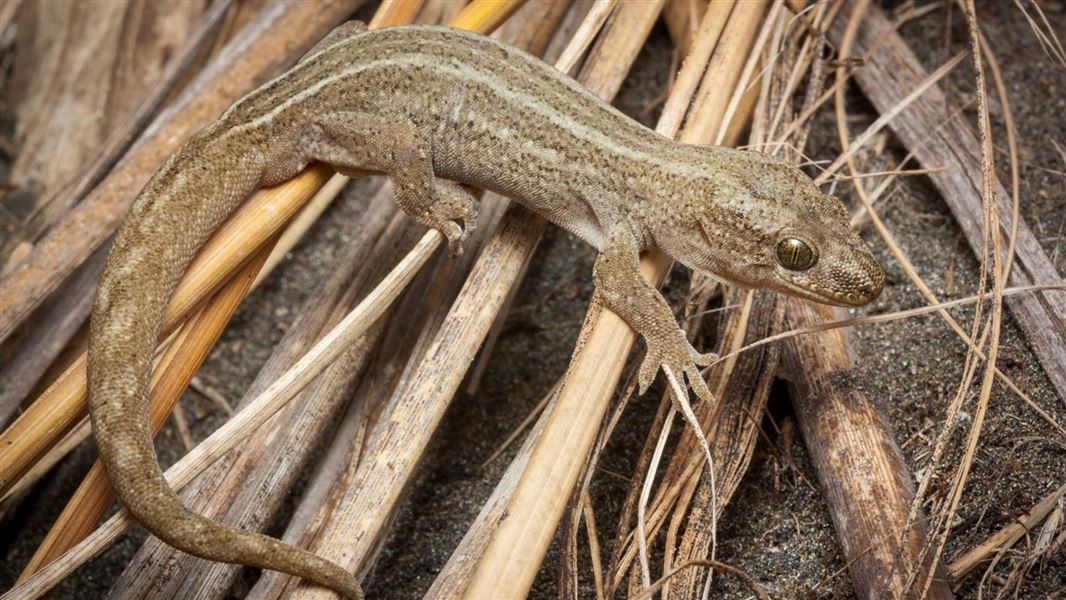Scientific name: Woodworthia aff. maculata “Muriwai”
Population: Declining
New Zealand status: Endemic
Conservation status: Threatened–Nationally Vulnerable
Primary threats: Habitat loss and disturbance of coastal habitat by vehicles, urbanisation, afforestation and fire; mammalian predators
Basic information
Length: Up to 69 mm from nose to base of tail.
Muriwai gecko population: Overall population size unknown but isolated to a small number of populations.
Food: Invertebrates, berries and nectar.
Distribution
Muriwai geckos are only found on the western coastline near Auckland. At present they are only known north of Auckland, but the northern and southern extent of the species distribution is not currently known.
Known populations are restricted to the sandy and rocky coastal area.
Challenges
We know very little about this tiny gecko and the main challenge is to improve our understanding of its ecology and conservation needs which will guide how we recover this species.
What we’re doing to learn more
Because we know so little about this gecko, the initial focus of research, currently being led by Auckland Council contractors, is to understand its distribution, population size and habitat preferences. And researchers are improving our understanding of their threats.
Once we have a clearer idea of where population centres are concentrated, we can begin managing threats and monitor the response of geckos to management.
Saving New Zealand's unique reptiles – Maikan Films Productions
The video gives an insight into the researchers working to understand the Muriwai gecko.
How you can help
Please follow the regulations and signs on vehicle access to beaches. Vehicles can damage the fragile dune habitat where this gecko lives. In some places vehicles will be excluded to protect the geckos.
